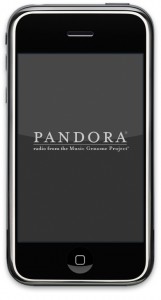 When AT&T first announced new monthly data caps for iPhone users in 2010 I suggested that it could stunt the growth of mobile internet radio. Some eighteen months later I do have to admit that doesn’t seem to have happened.
When AT&T first announced new monthly data caps for iPhone users in 2010 I suggested that it could stunt the growth of mobile internet radio. Some eighteen months later I do have to admit that doesn’t seem to have happened.
I made some rough calculations based upon the typical bandwidth consumed by streaming internet stations that use MP3 to estimate that the 2 GB monthly cap would be good for 34 hours of stereo music, and the 200 GB limit would only let 200 minutes squeeze through. While 34 hours seems like quite a bit of listening on a mobile device, I could see how the hours could add up for someone using an iPhone to stream internet radio in a car during a long commute. Of course that wouldn’t account for any other data usage for activities like email, browsing and facebook.
Therefore I was surprised to read a recent interview with Pandora CFO Steve Cakebread in which he declared, “The impact of data caps for Pandora listeners is almost non-existent.” Speaking with the investment site Seeking Alpha, Cakebread explained the typical bitrate Pandora uses is 32 kilobits per second, which is one-quarter the 128kbps rate I used for my estimate.
Bitrate and fidelity are tied together, with higher bitrates typically meaning better quality sound. MP3 is a nearly 20 year-old codec, and 128kbps is generally considered the bare minimum bitrate for obtaining acceptable stereo sound for music. However, Cakebread explains that Pandora utilizes the much more modern AAC+ codec which is more efficient and delivers better fidelity at lower bitrates than MP3. He tells Seeking Alpha that the average Pandora user listens to 10 hours a month, which adds up to 140 MB. This means that even if an average user did all her listening on a mobile device using the cell network, she would come in way under her 2 GB cap.
It’s good to have this kind of data directly from a major internet broadcaster like Pandora because it does help us understand the actual constraints faced by mobile streaming. At 32 kpbs a mobile listener with a 2 GB data plan should be good for some 142 hours of Pandora a month, which would be like listening for 17 whole work days. I can definitely imagine there are folks who listen to that much terrestrial radio, and I don’t doubt there are some power subscribers who tune in to Pandora for that much. So it does also illustrate the gap between mobile internet radio and its wired broadband and terrestrial broadcast counterparts. While mobile listening may not be seriously curtailed by data caps, it is still limited in ways that wired broadband or wireless broadcast are not.


